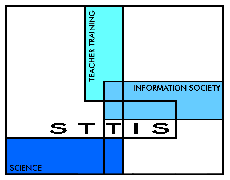Workshop 2
 Contents Contents
|
Section K Innovation and transformation
Activity
K1 Review and further planning (cont.) |
|
Unit 7I Energy resources
In this unit pupils:
-
are introduced to the concept of energy in the context of fuels as convenient
and therefore valuable sources
-
consider the nature and origin of fossil fuels and renewable sources of
energy and how their use has implications for the environment
-
consolidate and extend their ideas about energy resources for living things:
food for people and sunlight for plants
-
link the energy resources to the role of the Sun as the ultimate source
of most of the Earth’s energy resources
Unit 7J Electrical circuits
In this unit pupils:
-
consolidate and extend their ideas about circuits
-
use concepts of electric current and energy transfer to explain the working
of circuits
-
explain patterns in the measurements of current and voltage
-
use the concept of resistance qualitatively
-
build circuits in which current flow is usefully controlled
-
consider the hazards of electricity for humans
Unit 8I Heating and cooling
In this unit pupils:
-
recognise the need for a temperature scale
-
learn to distinguish between heat (as energy) and temperature
-
learn about mechanisms of heat transfer: conduction, convection and radiation,
and apply this to familiar contexts
-
learn about expansion and change of state in solids, liquids and gases
-
use the particle model to explain conduction, convection and change of
state
Unit 9I Energy and electricity
In this unit pupils:
-
explore a range of useful energy transfers and transformations
-
discuss the use of electricity as a convenient way to transfer energy to
do useful things
-
associate the concept of voltage with the transfer of energy in a circuit
-
investigate the voltage of cells
-
study how electricity is generated, with reference to environmental impacts
-
use the principle of conservation of energy to identify ways in which energy
is dissipated during transfers
Extracts taken from ‘Science: A scheme of work for key stage 3’
(2000) (Qualifications and Curriculum Authority)
|

 Teaching about energy
Teaching about energy

